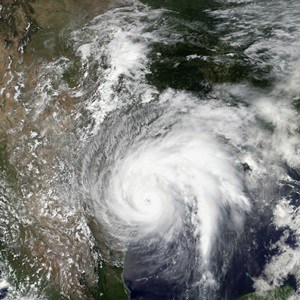
Tropical storm Harvey. Elements of this image are furnished by NASA
Hurricane Harvey pummeled Texas, striking the coastline north of Corpus Christi as a Category 4 storm on Aug. 25 and wreaking havoc across Houston area. At least eight people have reportedly perished, with many more injured, as homes, businesses, and infrastructure experienced catastrophic flooding.
Ratings firms quickly offered predictions for the insurance impact of Harvey, with most suggesting that the insured losses are unlikely to match those of Hurricane Katrina or Superstorm Sandy. Economic losses are sure to be dramatically higher
AIR Worldwide estimated that the ultimate insured losses from Harvey would range from $1.2 billion to $2.3 billion, although the Boston-based catastrophe modeling firm noted that its estimates do not include the impact business interruption or catastrophic flooding, the latter of which is already extensive.
AIR reported that Rockport, the Texas town located nearest to Harvey’s landfall site, had been devastated, with “shattered” wood-framed houses, collapsed masonry walls, overturned mobile homes, uprooted trees, and roofs torn from buildings.
“As devastating as the wind damage was in Rockport and surrounding towns, flooding from Harvey’s torrential rains has had the greatest impact,” said Dr. Eric Uhlhorn, principal scientist at AIR Worldwide. “With a lack of large-scale atmospheric steering, Harvey’s motion was stalled resulting in extremely heavy and continuous tropical rainfall in a concentrated area. Harvey has already unleashed catastrophic and unprecedented flooding in southeastern Texas, and these conditions are expected to last for several more days.”
AIR noted that per the Insurance Council of Texas, just 20 percent of homeowners in the state carry NFIP-backed flood insurance. However, included within that 20 percent is over 240,000 policies – insured value of over $60 billion in coverage in the Houston area. The federal program is already nearly $25 billion in debt and is currently up for reauthorization as of Sept. 30. The storm also follows a recent White House executive order revoking federal flood management risk management standards implemented in 2015 that required building projects using federal funds to take flood risk into account.